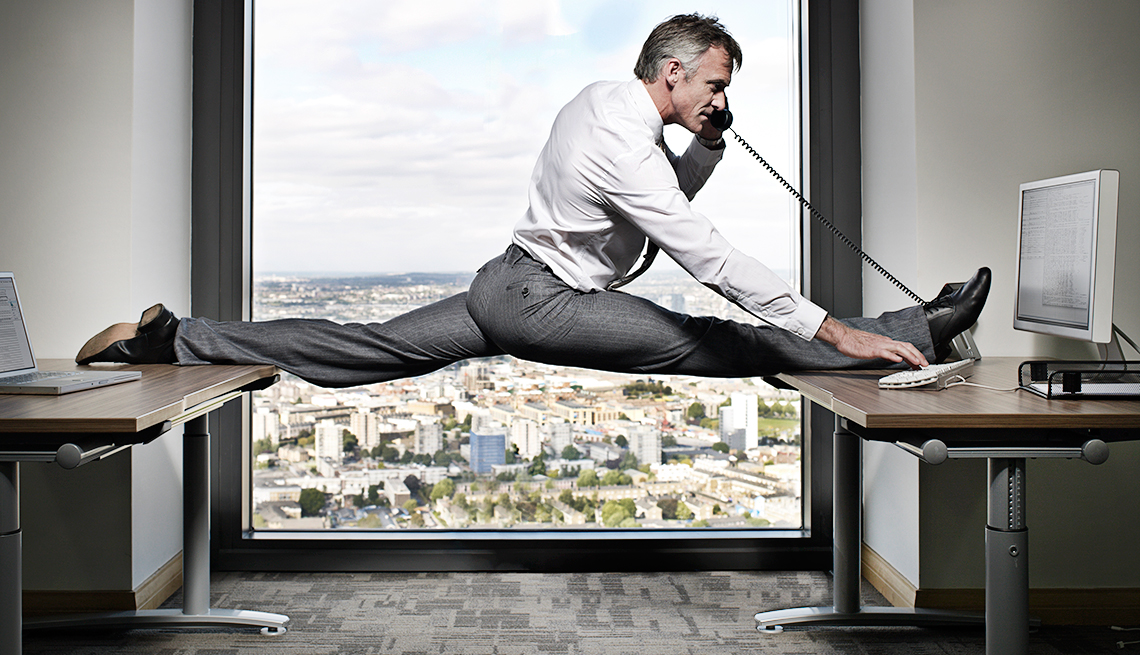AARP Hearing Center
The days of typing at your desk in a stationary chair for eight hours may be vanishing. Workplace health products are all the rage, from standing and treadmill desks to wearable pedometers and posture trackers. But does reviewing quarterly reports while walking in place really burn enough calories to move the fitness needle? How about using an exercise ball for a seat? Or a foot pedaler under your desk?
We spoke to ergonomic and wellness experts about the hottest health gizmos populating today's workplaces. They told us which can improve your health, which could compromise it and which might have little to no effect.
Sit-stand desks
We've all been warned that sitting is the new smoking. Desks that give you the option to stand certainly can help you avoid sitting all day long. A 2016 University of Iowa study shows that given long-term access to sit-stand desks, workers will stand an hour more during the workday than those who use traditional desks. And that means more calories burned, however minimal, says Lucas Carr, an assistant professor of health promotion at the University of Iowa who contributed to the study.
But a new analysis of 20 studies on sit-stand desks and their sexier offshoots, treadmill and bicycle desks (see below for more on them), casts doubt on their benefits. Researchers with Cochrane, a London-based health care think tank, found little concrete evidence that adding the ability to stand, walk or pedal at one's workstation increases a person's overall health in the long term.
Scientists do agree that, much like sitting, standing for long periods taxes the body. Risks include fatigue, back pain and varicose veins, says Alan Hedge, ergonomics professor at Cornell University.
So what's the solution? Regardless of whether you use a standing or exercise-friendly desk, movement throughout the day is key. Based on his research, Hedge recommends sitting for 20 minutes; standing for eight minutes; walking, stretching or otherwise moving for two minutes; then repeating the cycle throughout the workday.
Treadmill and bicycle desks
Skepticism of the ability of treadmill and bicycle desks to benefit worker health in the long run might have something to do with the type of work being done at these desks.
"It's difficult to type or mouse and walk at the same time," Hedge says. "The brain has trouble coordinating conflicting movements. It's not an effective way of working."
Research shows that we compromise accuracy and speed if we try to create a PowerPoint or edit a quarterly report while walking or pedaling, Hedge says. Thus, you're forced to either cut back on the exercise or sacrifice working efficiently.
That said, Carr's research has found that workers with bicycle desks do get 50 more minutes of activity throughout the workday. So while you probably won't get in a full cardio workout, the extra activity could improve your health. And if you're only talking on the phone, reading or watching a video, you'll be able to pedal or walk faster.































































